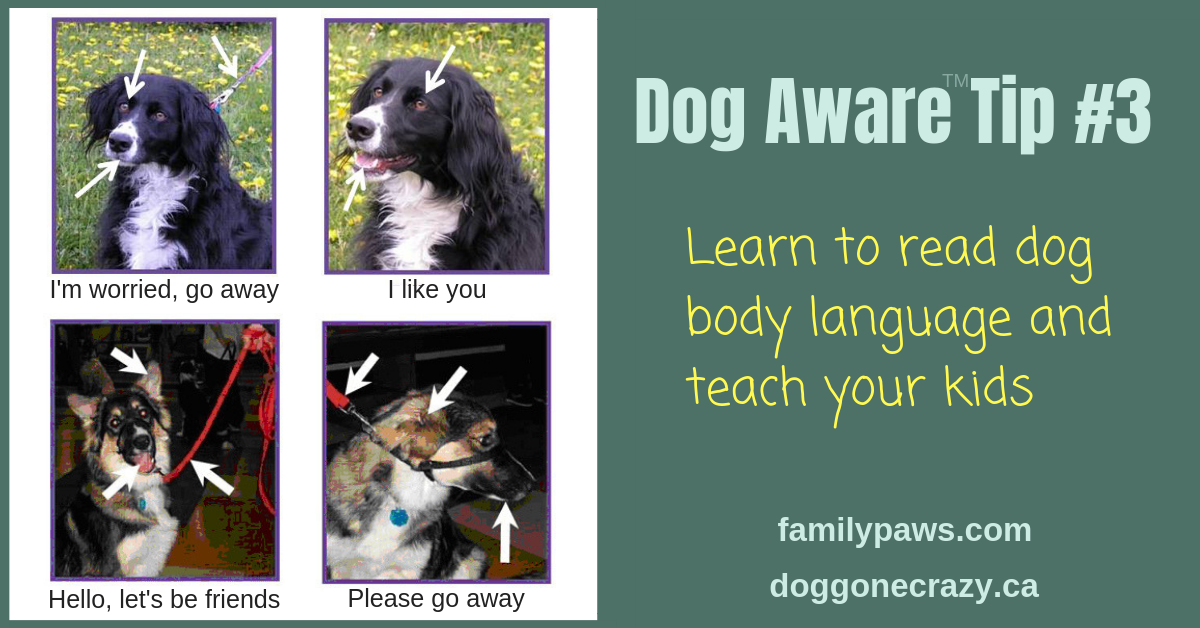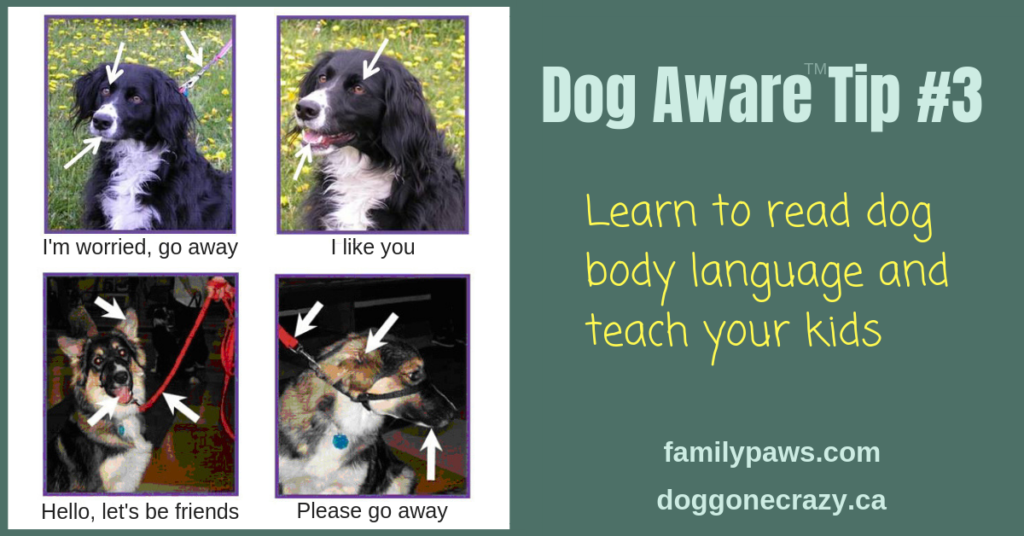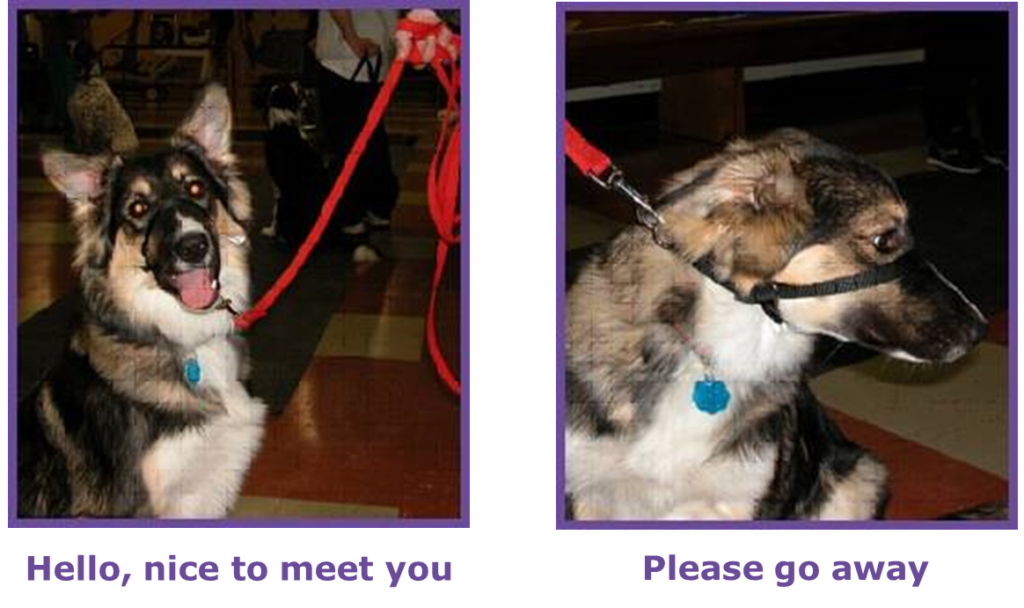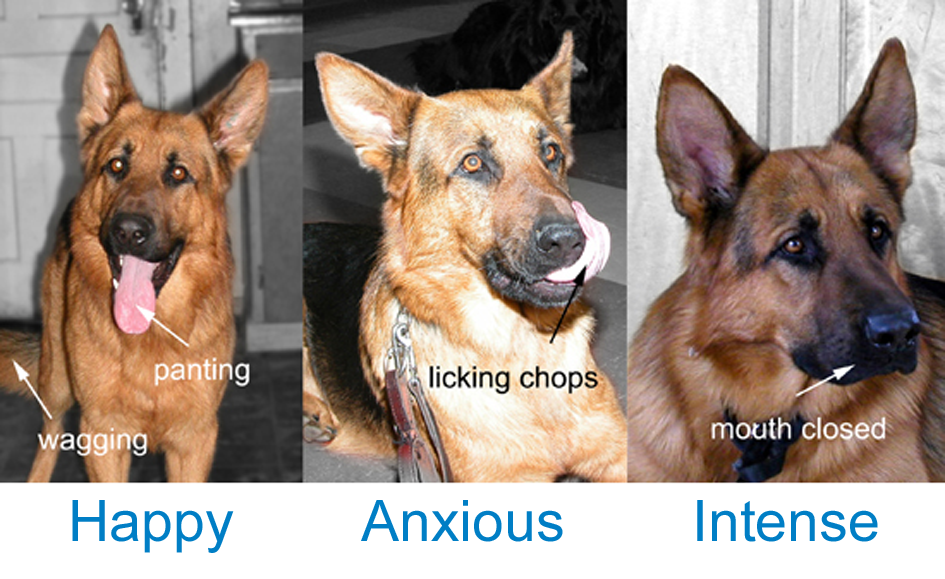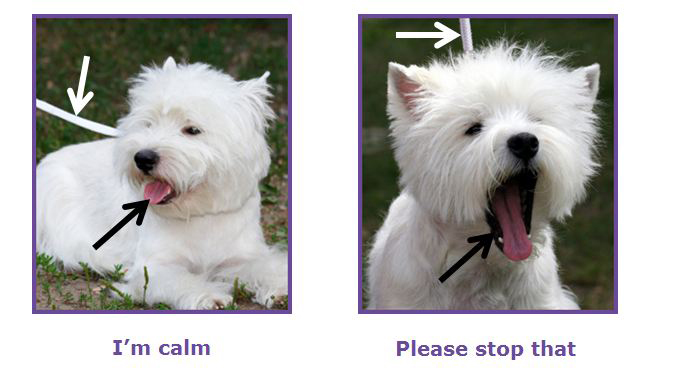Happy, relaxed dogs that want to be with kids are the safest dogs to have around your kids. Dogs tell us with their body language how they’re feeling.
Learn to speak dog and teach your kids about the key signals they need to know to be able to respect a dog’s choice about whether to interact. This applies to your own dog as well as all other dogs that they know. They should just stay away from strange dogs altogether and stand like a tree if a strange dog approaches. See Tip #1
There are many books and courses about dog body language and there is a huge amount of information and research available for those who want to delve into the subject. Here we are trying to keep things simple for kids.
Here are the most important six things your kids need to know about dog body language:
Loose and Wiggly vs Freeze and Stare
A dog that is all loose and wiggly, wagging his tail and panting is a dog that may want to meet or interact. If he goes stiff or stops panting, then leave him alone. Teach your kids that a dog should come to them, rather than them going to the dog for attention.
Here’s a video that shows the dangerous freeze and stare behavior that could easily lead to a bite if the warning isn’t heeded:
Turning Away, Walking Away
This one seems obvious, but you still need to teach your kids explicitly to be sure they understand. If a dog turns his head away or walks away, he wants some time and space to himself. Leave him alone until he returns for more attention.
Panting vs Mouth Closed
Kids can easily see the difference between the happy panting dog and the closed mouth anxious dog. This is the only thing that they need to know of they’re too little to learn more advanced signs.
Tongue Flick
When a dog flicks his tongue out or does a full on nose lick (when there’s no food present) as in the image above, this dog is showing anxiety. He’s saying, “please give me space, or stop doing that scary or annoying thing”. Teach your kids to leave a dog alone who shows this behavior.
Yawn
Like the tongue flick, a yawn out of context (when the dog is not sleepy) is a sign of anxiety. The dog is saying “please give me space, or stop doing that scary or annoying thing”. Teach your kids to leave a dog alone who shows this behavior.
Half Moon Eye
If the dog is showing a half moon of white in his eye, this is another sign that he’s worried and wants to be left alone. Some trainer call this “whale eye”. We call it “half moon eye” because that’s what it looks like and kids can understand and remember this.
Comparison Photos
We’ve found that comparison photos are very useful in teaching these lessons to kids and to adults for that matter. We’ve incorporated these into several of our products:
The Doggone Crazy Board Game for kids
The Doggie Detective Teacher Kit for trainers/teachers to use with kids
The Flashcards Kit (the images in the cover photo for this post are from that kit)
The Flashcards ebook for kids
Take Our Course to Learn More
Get 50% off our online course: Basic Dog Body Language. Use the code BBL50 to get the discount.
More Resources
Family Paws Parent Education: Expert support and resources for families with dogs.
Clicker Puppy Training Streaming video – Essential training info for kids – 40% off sale – use the code PUPPYSALE40
Doggone Crazy Board Game – have fun while learning about dog body language and how to act around dogs
Doggie Detective® Teacher Kit – for humane educators who want to teach kids to be Dog Aware®
